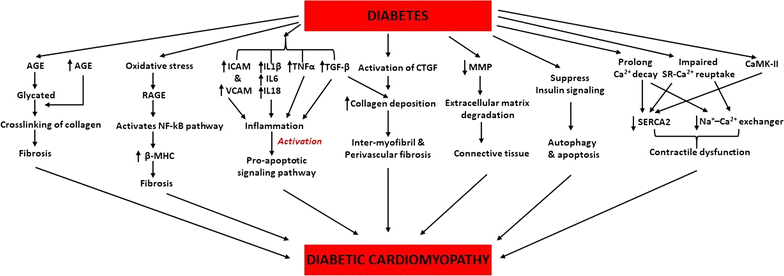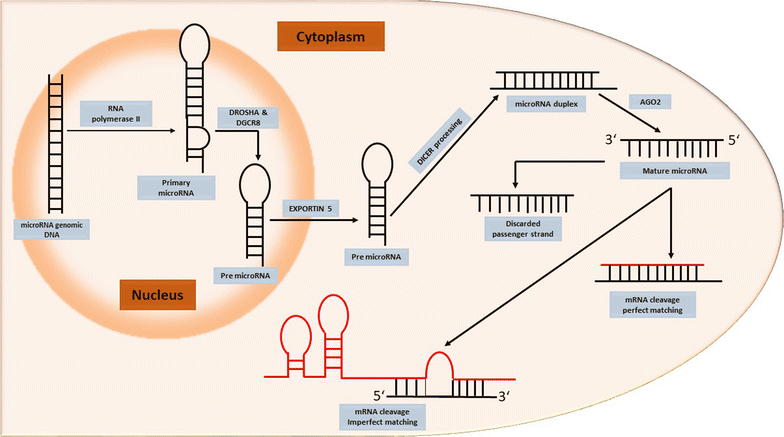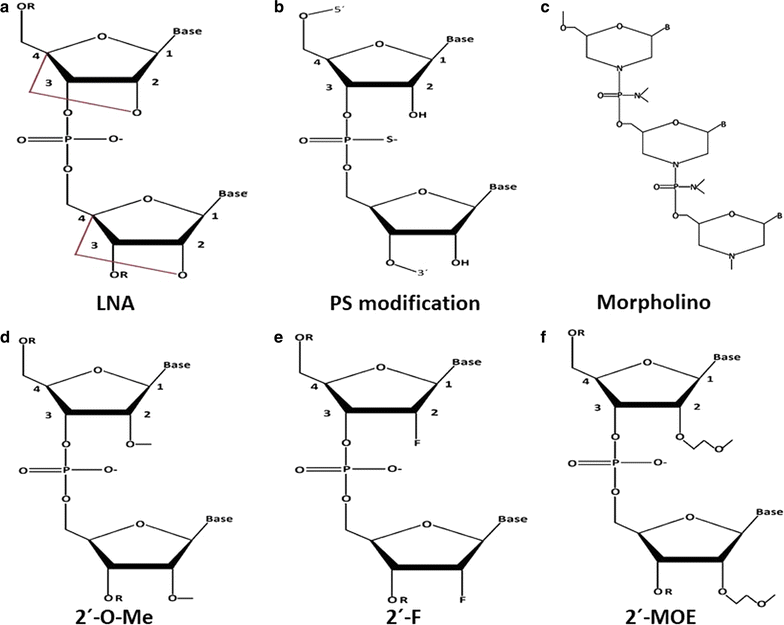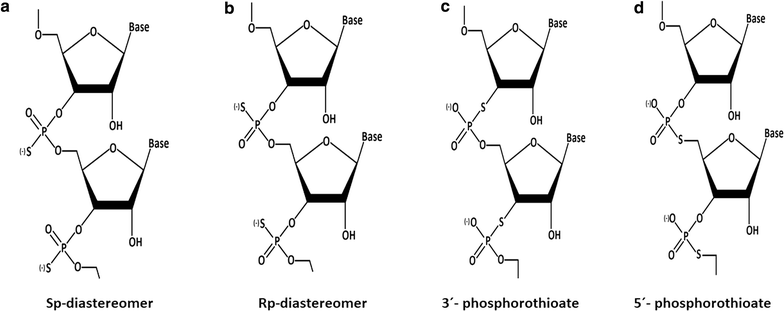Molecular mechanism of diabetic cardiomyopathy and modulation of microRNA function by synthetic oligonucleotides
- PMID: 29566757
- PMCID: PMC5863891
- DOI: 10.1186/s12933-018-0684-1
Molecular mechanism of diabetic cardiomyopathy and modulation of microRNA function by synthetic oligonucleotides
Abstract
Diabetic cardiomyopathy (DCM) is a chronic complication in individuals with diabetes and is characterized by ventricular dilation and hypertrophy, diastolic dysfunction, decreased or preserved systolic function and reduced ejection fraction eventually resulting in heart failure. Despite being well characterized, the fundamental mechanisms leading to DCM are still elusive. Recent studies identified the involvement of small non-coding small RNA molecules such as microRNAs (miRs) playing a key role in the etiology of DCM. Therefore, miRs associated with DCM represents a new class of targets for the development of mechanistic therapeutics, which may yield marked benefits compared to other therapeutic approaches. Indeed, few miRs currently under active clinical investigation, with many expressing cautious optimism that miRs based therapies will succeed in the coming years. The major caution in using miRs based therapy is the need to improve the stability and specificity following systemic injection, which can be achieved through chemical and structural modification. In this review, we first discuss the established role of miRs in DCM and the advances in miRs based therapeutic strategies for the prevention/treatment of DCM. We next discuss the currently employed chemical modification of miR oligonucleotides and their utility in therapies specifically focusing on the DCM. Finally, we summarize the commonly used delivery system and approaches for assessment of miRNA modulation and potential off-target effects.
Keywords: Clinical application of microRNA; Delivery of therapeutic microRNA; Diabetic cardiomyopathy; MicroRNA; Modulation of microRNA.
Figures




References
-
- Anderson JL, Adams CD, Antman EM, Bridges CR, Califf RM, Casey DE, Chavey WE, Fesmire FM, Hochman JS, Levin TN. ACC/AHA 2007 guidelines for the management of patients with unstable angina/non-ST-elevation myocardial infarction: a report of the American College of Cardiology/American Heart Association Task Force on Practice Guidelines (Writing Committee to Revise the 2002 Guidelines for the Management of Patients With Unstable Angina/Non-ST-Elevation Myocardial Infarction) developed in collaboration with the American College of Emergency Physicians, the Society for Cardiovascular Angiography and Interventions, and the Society of Thoracic Surgeons endorsed by the American Association of Cardiovascular and Pulmonary Rehabilitation and the Society for Academic Emergency Medicine. J Am Coll Cardiol. 2007;50(7):e1–e157. - PubMed
-
- Chavez JA, Knotts TA, Wang L-P, Li G, Dobrowsky RT, Florant GL, Summers SA. A role for ceramide, but not diacylglycerol, in the antagonism of insulin signal transduction by saturated fatty acids. J Biol Chem. 2003;278(12):10297–10303. - PubMed
-
- Hagemann D, Bohlender J, Hoch B, Kraus E-G, Karczewski P. Expression of Ca2+/calmodulin-dependent protein kinase II δ-subunit isoforms in rats with hypertensive cardiac hypertrophy. Mol Cell Biochem. 2001;220(1–2):69–76. - PubMed
Publication types
MeSH terms
Substances
Grants and funding
LinkOut - more resources
Full Text Sources
Other Literature Sources
Medical

